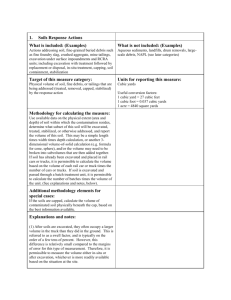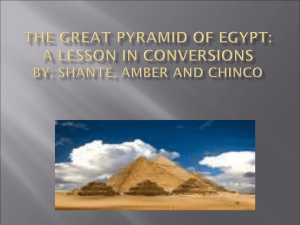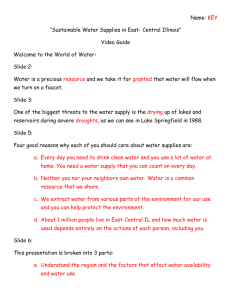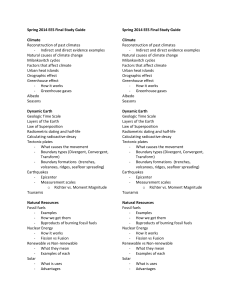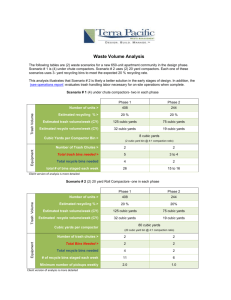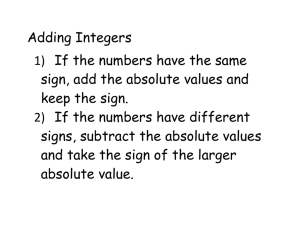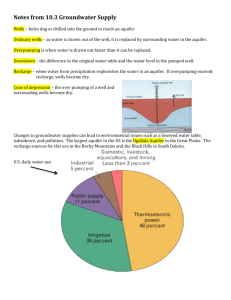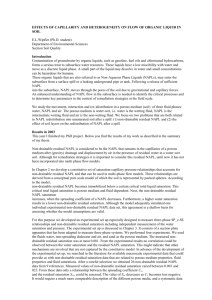Groundwater Response Actions
advertisement
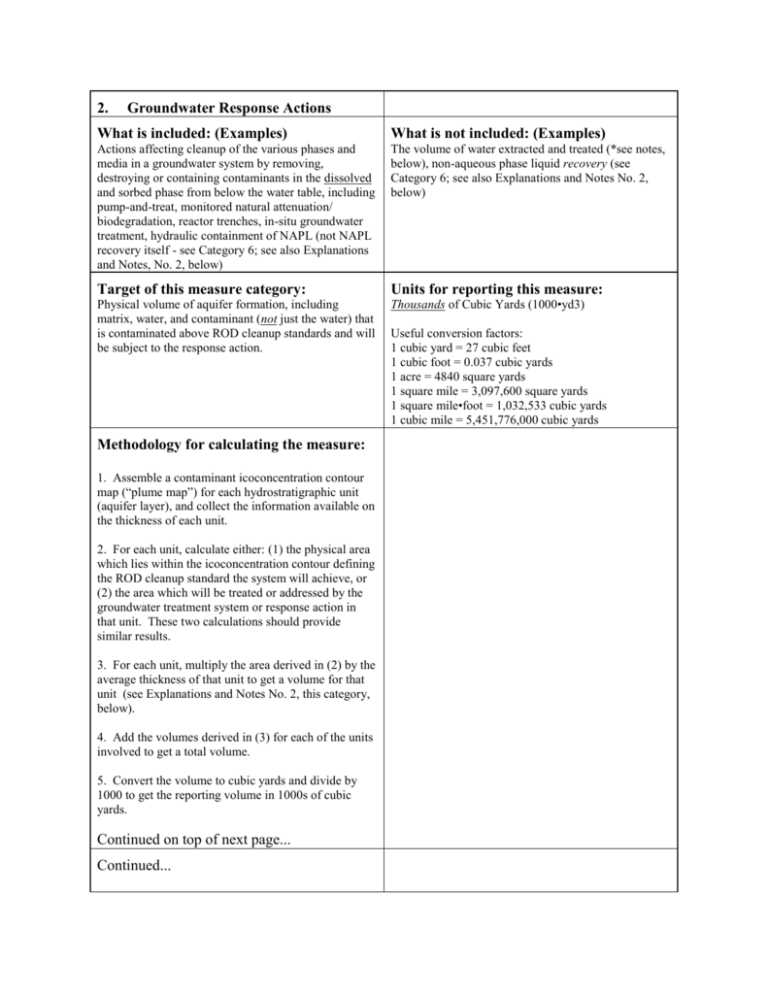
2. Groundwater Response Actions What is included: (Examples) What is not included: (Examples) Actions affecting cleanup of the various phases and media in a groundwater system by removing, destroying or containing contaminants in the dissolved and sorbed phase from below the water table, including pump-and-treat, monitored natural attenuation/ biodegradation, reactor trenches, in-situ groundwater treatment, hydraulic containment of NAPL (not NAPL recovery itself - see Category 6; see also Explanations and Notes, No. 2, below) The volume of water extracted and treated (*see notes, below), non-aqueous phase liquid recovery (see Category 6; see also Explanations and Notes No. 2, below) Target of this measure category: Units for reporting this measure: Physical volume of aquifer formation, including matrix, water, and contaminant (not just the water) that is contaminated above ROD cleanup standards and will be subject to the response action. Thousands of Cubic Yards (1000•yd3) Methodology for calculating the measure: 1. Assemble a contaminant icoconcentration contour map (“plume map”) for each hydrostratigraphic unit (aquifer layer), and collect the information available on the thickness of each unit. 2. For each unit, calculate either: (1) the physical area which lies within the icoconcentration contour defining the ROD cleanup standard the system will achieve, or (2) the area which will be treated or addressed by the groundwater treatment system or response action in that unit. These two calculations should provide similar results. 3. For each unit, multiply the area derived in (2) by the average thickness of that unit to get a volume for that unit (see Explanations and Notes No. 2, this category, below). 4. Add the volumes derived in (3) for each of the units involved to get a total volume. 5. Convert the volume to cubic yards and divide by 1000 to get the reporting volume in 1000s of cubic yards. Continued on top of next page... Continued... Useful conversion factors: 1 cubic yard = 27 cubic feet 1 cubic foot = 0.037 cubic yards 1 acre = 4840 square yards 1 square mile = 3,097,600 square yards 1 square mile•foot = 1,032,533 cubic yards 1 cubic mile = 5,451,776,000 cubic yards Additional methodology elements for special cases: (1) In groundwater containment remedies using either pump-and-treat or biodegradation, calculate the volume of aquifer formation that is being contained (so that contaminants cannot escape the containment zone) (2) If the thickness of an aquifer unit varies by more than 50% across the area in question, do not use the average thickness, but divide the volume of affected aquifer up into smaller subvolumes such that the variation in thickness within each subvolume is less than 50%. Then, (a) run the calculation for each of the subvolumes, (b) add the subvolumes together to get a total volume for that one hydrostratigraphic unit, and finally, (c) add all the unit volumes to get the total reported volume. (3) If pump-and-treat will be used for part of the cleanup and monitored natural attenuation will be used for another part, and both processes will attain the ROD standards, then report the volume as the sum of the volumes being treated by each both process. Explanations and notes: (1) This method does not calculate the volume of water pumped and treated. Make sure that you are calculating the total volume of actual aquifer formation (not just water) that is contaminated above treatment standards and will be addressed by the system. Note that aquifer porosity is not pertinent to the calculation, because the goal is to clean the entire aquifer system of contamination, not merely the water in the formation. (2) There is a critical difference between NAPL hydraulic containment and NAPL recovery. The former actually contains the water around the NAPL to keep dissolved contaminants from escaping. It is a groundwater response action in that it addresses dissolved phase contaminants. This type of response action falls in this category. The latter, NAPL recovery, involves removing pure NAPL from the ground in the residual phase. This is addressed in Category 6. Source: 12/12/03 "Final Methodology for Estimating Superfund and RCRA Corrective Action Case Conclusion Data Sheet (CCDS) Environmental Benefits", pp. 7 - 12 of the guidance.

